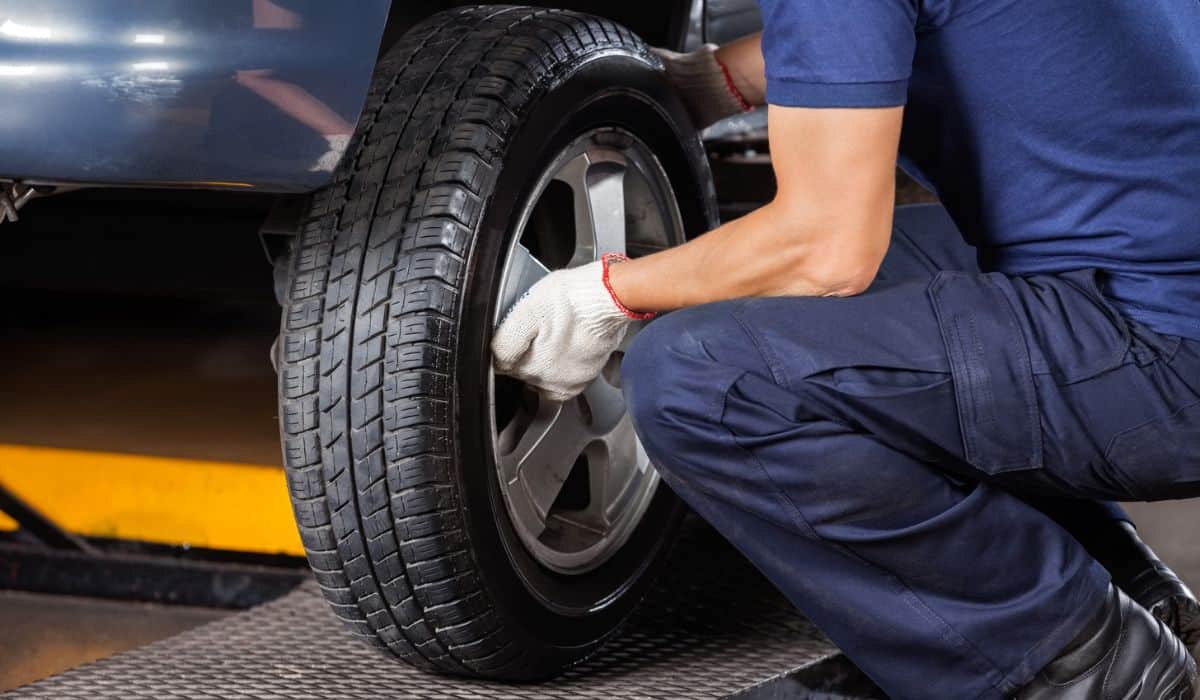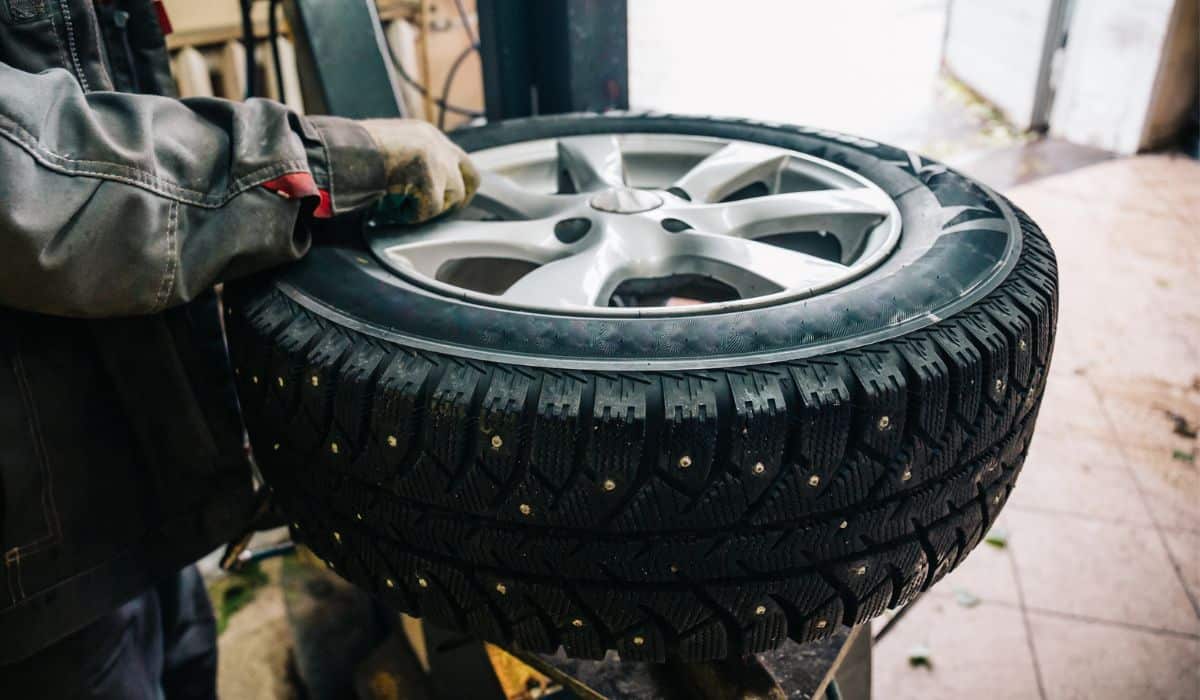33-Inch Vs. 305 Tires: Are They The Same?
If you’re venturing into the off-roading domain, you’ll need good tires that can endure the rough terrain and provide your vehicle with enough height to navigate the shifting landscape. Putting large tires on your 4WD will guarantee the best off-roading experience, but are 33-inch tires the same as 305 tires?
33-inch and 305 tires are not exactly the same, but they’re similar in size. The 305 tires have a slightly larger overall diameter — by around 0.22 inches — and a slightly higher aspect ratio, at 55% compared to the 33-inch’s 52%. Both have a rim diameter of 20 inches.
So, when choosing the right tire size for your vehicle, you should keep the differences — no matter how slight — in mind. You should consult your tire dealer and check your vehicle’s manual to be sure that you’re getting the right fit. Let’s take a closer look at how 33-inch and 305 tires compare, as well as some general information about how tires are categorized.
Are 33-Inch Tires Different From 305 Tires?

33-inch tires are slightly different from 305s in terms of the external diameter. A 33-inch tire, like the one specified as 33X12.5-R20, has an overall diameter of 33.22 inches. A 305 tire, on the other hand, has an overall diameter of around 33 inches, so it’s only 0.22 inches (5.59 mm) smaller.
We can also compare and distinguish these tires based on other parameters like the aspect ratio and rim diameter. For example, a 33✕12.5-R20 and a 305/55R20 both have a rim diameter of 20 inches. However, the 33-inch tire has an aspect ratio of 52%, while its 305 counterpart has a 55% aspect ratio.
You need to choose these tires carefully depending on the rims of your vehicle, the lift capacity, and the road conditions. Moreover, the tires you settle on should have a sufficient load index and be wide enough to fit well on your vehicle’s stock rims.
What Size Rims Do You Need for 33-Inch Tires?
Generally, 33-inch tires will fit rims measuring 15 to 20 inches wide. However, the best rim sizes for 33-inch tires are those measuring 15 or 16 inches wide. So, while the tires are versatile, it’s best to match them with a wheel size that contributes to their maximum efficiency.
For example, you can’t fit 33-inch tires on a Jeep Gladiator with 20-inch rims unless going off-road isn’t your priority. Such an installation will compromise the truck’s off-road capabilities.
Are 285 and 33-Inch Tires the Same?
Yes, 285 and 33-inch tires are one in the same; they share a common size. The “285” refers to the tread width in millimeters, while “33-inch” denotes the tire’s overall (external) diameter. The accepted metric equivalent of 33 inches is usually 285/75R16.
The diameter of these tires is usually around 33 inches, or 32.8 inches to be precise (883 mm). They are 11.2 inches wide, with a circumference of 103.1 inches. Their sidewall measures 8.4 inches (213 mm), and their rev/mile stands at 615.
How to Better Understand Tire Sizes

These are the common tire size specifications you can expect to deal with:
- 33 inches
- 37 inches
- 285/75R16
- 285/70R17
- 275/70R18
- 275/60R20
Manufacturers specify tire parameters with three distinct numbers to help you understand their sizes better. The first number tells you the section width of the tire, while the second number specifies its aspect ratio. The third number indicates the tire diameter.
For example, a tire may be specified as ST205/75R15. The prefix “ST” means the tire is meant for trailer service only. Then, the tire has a section width of 205 mm, a sidewall aspect ratio of 75%, and an actual diameter of 15 inches. Its construction type is also radial, denoted by the “R.”
Here’s a detailed explanation of the key specifications that will help you understand tire sizes better:
The Category Prefix
Tire prefixes denote these four main categories:
- P: Passenger car
- T: Temporary spare
- LT: Light truck
- ST: Trailer
Section Width
The section width of a tire is measured at its thickest point, which is the distance from sidewall to sidewall. You get this number from the first part of the tire specification numbers, and it’s given in millimeters. Divide the number by 25.4 to get the section width in inches.
So, the number 285 in 285/70R17 means the tire has a section width of 285 millimeters (11.22 inches). A 305/55R20 tire has a section width of 12.01 inches.
Tire Diameter
Tires have an “overall diameter” and an “actual diameter,” but this number reflects the actual diameter, which is measured between its bead seats (the edges that sit on the rims). The overall diameter is measured from the outside edges of the tire.
When people talk about the tire diameter, they’re referring to the actual diameter of the wheel onto which the tire fits. It’s denoted by the third part of the tire number. So, for a 285/75R16 tire, the diameter is 16 inches — the last part of these three numbers. A tire that’s specified as 305/55R20, meanwhile, has a diameter of 20 inches.
Sidewall Height
Sidewall height is the distance from the outer edge of the tire to its bead. A 305/55R20 tire has a sidewall height of around 6.6 inches (167.64 mm) while a 33✕12 50R20 tire has a sidewall height of 6.51 inches (165.36 mm).
Aspect Ratio
The sidewall aspect ratio helps you figure out the distance between the wheel-rim surface (bead) and the tread outside. It’s the second part of the tire specification number, and it helps you compare different tire sizes and profiles easily.
For example, a 305/55R20 tire has an aspect ratio of 55, meaning its sidewall height is 55% of the tire width. Since the section width is 12.01 inches, multiply this number by 55/100 to get 6.6 inches. A 205/75R15 tire would have a section height that’s 75% of 8.07 inches (205 mm).
